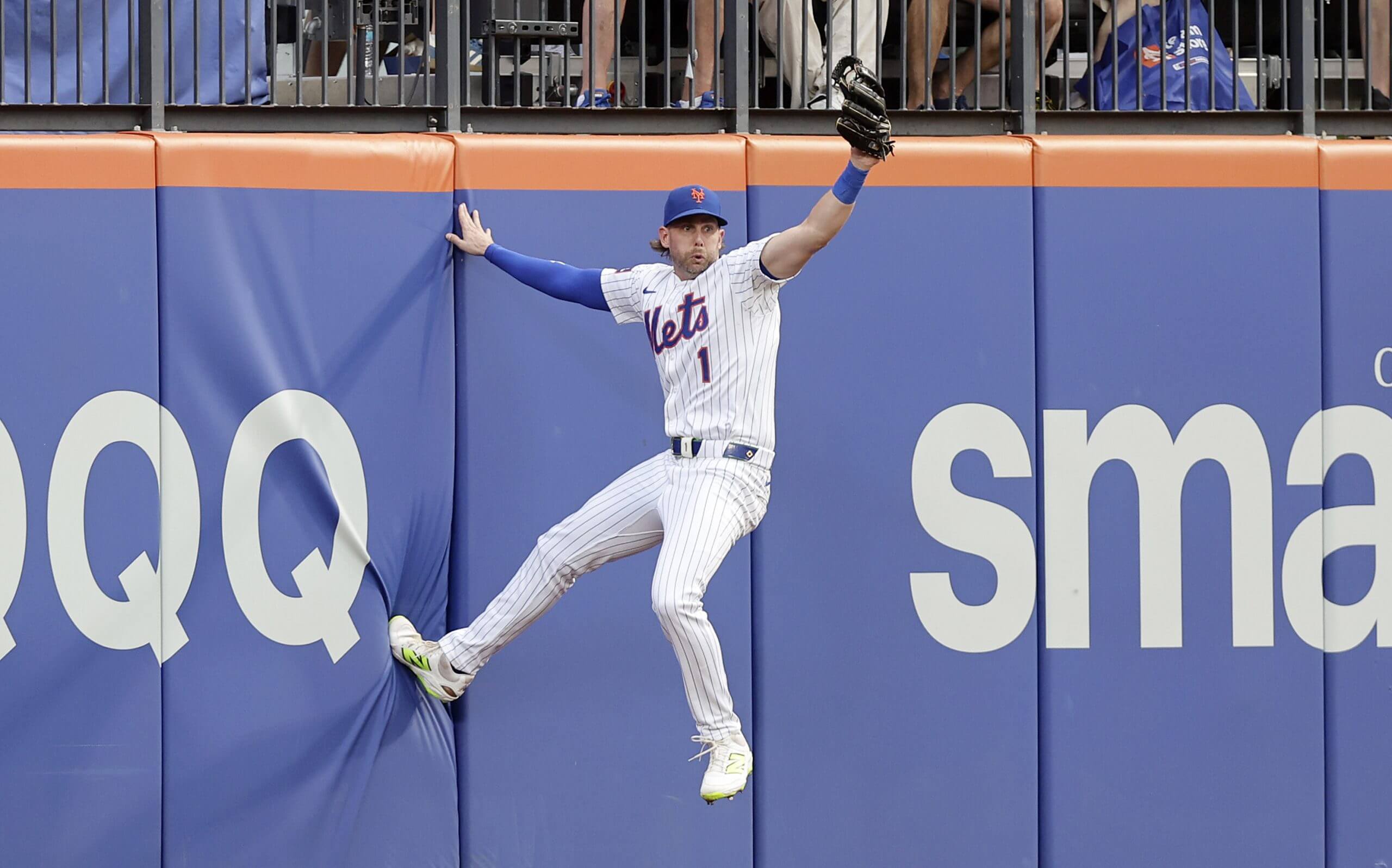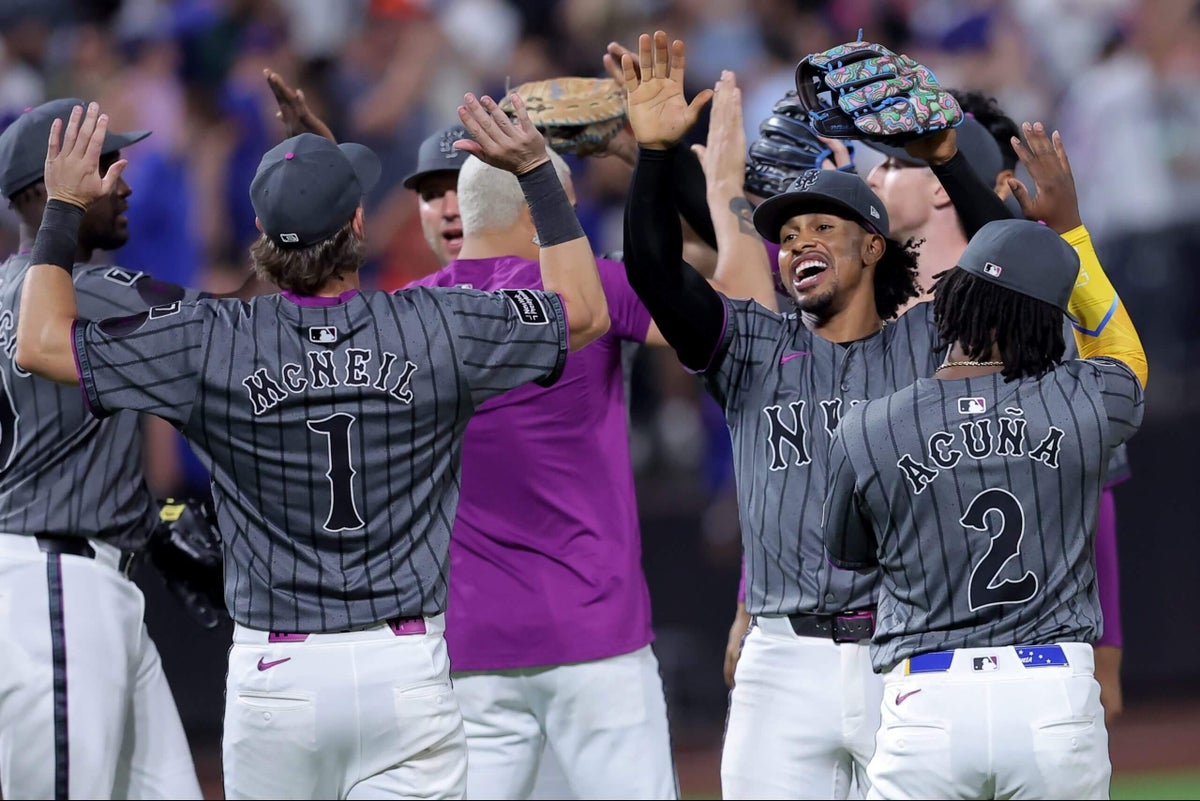NEW YORK — With just over a week to go before the trade deadline, here’s what we’re hearing about the New York Mets.
Bullpen reinforcements
President of baseball operations David Stearns referred to “reinforcements,” plural, on Monday, and another team source suggested the Mets may take more of a quantity approach to supplement their bullpen this deadline. That fits Stearns’ M.O.: While in Milwaukee, the biggest bullpen additions he made were Jeremy Jeffress (2017), Anthony Swarzak (2017) and Joakim Soria (2018). And of course, he traded away Josh Hader (getting Taylor Rogers back) when the Brewers led their division in 2022.
Last year with the Mets, Stearns added four relievers in July: Phil Maton, Ryne Stanek, Huascar Brazobán and Tyler Zuber.
So while the Mets aren’t ruling out a significant late-game addition, don’t be surprised if they instead spread their assets around to acquire multiple arms rather than concentrating on one bigger, shutdown set-up man for Edwin Díaz.
The Mets’ preference would be for one of those arms to be left-handed. In a pinch, a reverse-split righty like Arizona’s Shelby Miller or Pittsburgh’s Dennis Santana could also work for that role.
Adding two or even three arms would give the Mets cover in the event of an injury to their current bullpen core. And while it’s customary to plan ahead, thinking of an eight-man “postseason bullpen,” the Mets would ideally have an expanded pool of 10-plus relievers to choose from in October, both to optimize their bullpen’s matchups against a specific opponent and to keep some of the middle-relief options fresher through four potential postseason rounds.
Stearns mentioned the possibility of calling up a Triple-A starter to help out in the bullpen later in the season. Of the Triple-A trio of Brandon Sproat, Nolan McLean and Blade Tidwell, Tidwell might have the clearest path to a relief role this season.
Tidwell’s stuff grades out very well in analytical models, and he’s been better in the first inning this season at Syracuse than Sproat or McLean.
Triple-A SP in the first inning
Player
IP
OBP
SLG
OPS
K%
BB%
12
0.292
0.238
0.530
29.2%
8.3%
15
0.376
0.352
0.728
18.8%
11.8%
9
0.342
0.471
0.813
26.3%
7.9%
It doesn’t hurt, either, that unlike his peers, Tidwell is already on the 40-man roster.
Mets ‘active’ in center field
Can Jeff McNeil handle a continued increase in workload in center field? (Jim McIsaac / Getty Images)
League sources describe the Mets as active in the market for center fielders while adding that New York is not behaving as if it views upgrading the position as a necessity. At the least, it appears the Mets are taking a little bit more time to figure out their motivation level.
Such a stance echoes Stearns’ comments Monday regarding the position. Stearns acknowledged center field is “the one position where we haven’t gotten the level of production we anticipated coming into the year.” But that doesn’t mean he’s hell-bent on finding an external solution.
“For me, the bar to improve center field has probably risen over the past two weeks,” Stearns said, “because of Jeff (McNeil)’s comfort level and the secondary skills that Tyrone (Taylor) can provide.
“I’m certain we’re going to be engaged, but we’ve got to clear the bar.”
In other words, the Mets would have to find something better than what they already have.
The combination of Taylor and McNeil gives the Mets a decent floor. Taylor is a superb defender. Rival scouts say McNeil has impressed them defensively. McNeil’s defensive metrics have improved over the last couple of weeks.
“He’s instinctual and has just gone out there basically and been a baseball player,” outfield coach Antoan Richardson said. “It’s him understanding his limits and where his strengths are.”
Offensively, the value from the duo depends on playing time.
Since McNeil’s first appearance in center field on April 26, the Mets have received a .671 OPS from the position, which is 17th in MLB, and a 91 wRC+, which is 15th (eight clubs boast a wRC+ from center field above 110). So their offensive production checks in right around league average for a primarily defensive position.
Taylor drags down the offensive numbers. Through 280 plate appearances, Taylor is slashing just .211/.264/.309 with two home runs. Stearns is the only president of baseball operations Taylor has ever played for. Dating back to their shared time with the Brewers, Taylor typically operated as a fourth or fifth outfielder, yet always accumulated a healthy amount of playing time. An acquisition at the trade deadline would demote him to much more of a bench role.
“I don’t think about it at all, and I just go about it as, stay in the present, and whatever happens, happens,” Taylor said. “I wasn’t always like that, but I had to learn to be that way.”
McNeil has started in center field three out of the last four games, including on Monday and Tuesday (it was just the second time he drew back-to-back starts at the position this season). Over the last 23 games, McNeil has made 10 starts in center field. As a center fielder, McNeil owns a .919 OPS. His ability to hit lefties (.849 OPS) makes it harder for Taylor to crack the lineup.
Asked if he’d be comfortable with McNeil as the everyday center fielder, Stearns said he liked the current distribution of playing time. Manager Carlos Mendoza said Tuesday that the team will be vigilant in not overworking McNeil, who’s starting most days at second base when not in center.
“We have to take care of him, as well,” the manager said.
Can McNeil handle a continued increase in workload at center field? Is their production from McNeil and Taylor better than what players in the trade market, such as Cedric Mullins (Baltimore Orioles) and Luis Robert Jr. (Chicago White Sox), can provide?
Unless the Boston Red Sox dangle their outfielders, rival scouts say Robert represents the highest upside in the market at center field because he is 27 years old and just two seasons removed from hitting 38 home runs. Despite a promising start to July (.364 batting average in 10 games), Robert’s overall numbers for this season are below average: .206 batting average, .636 OPS, 10 home runs in 323 plate appearances.
Given the concerns over Robert’s health and production, coupled with the depth of the Mets’ farm system, New York shouldn’t have to part with their best prospects to acquire Robert.
For the Mets, league sources speculatively suggested the cost for Robert may involve multiple prospects in the back end of the club’s top 20. Is that too much for the Mets’ taste? Whether they view Robert — and the cost to get him — as an upgrade over their current situation at the position remains unknown.
Brett Baty’s production is one of the main reasons why the Mets feel comfortable with what they have at third base. Mets officials view him as above-average defensively. Offensively, he carried a 108 OPS+ (100 is league average) into Tuesday’s game. Since the Mets recalled him on May 7 (197 plate appearances), Baty owns a .765 OPS. In that same span, Baty’s figure is better than Pete Alonso’s (.749) and Francisco Lindor’s (.713).
Money not a huge advantage
In the recent past, the Mets have been able to flex their financial muscles around the deadline by either paying down what’s owed a player to bring back better prospects (the Justin Verlander, Max Scherzer and Eduardo Escobar deals in 2023) or by taking back all of what’s owed a player to limit their prospect costs going the other way (the Phil Maton and Ryne Stanek trades last year).
Stearns doesn’t see the same opportunity to wield that advantage this year.
“If anything, I’ve gotten the opposite from certain teams,” Stearns said. “Some sellers would be more open to paying down a player to get better prospect return than having other teams take the money.”
As The Athletic reported last month, the White Sox are an example of a team willing to include cash in trade talks for a better return.
Prospects opening eyes
Multiple scouts from different organizations this week raved about A.J. Ewing — the type of mid-tier prospect the Mets lacked in their system a few years ago. One American League team recently sent a scout to High-A Brooklyn to specifically evaluate Ewing, league sources said. Ewing, a fourth-round pick in 2023, slashed .400/.500/.600 the first month of the season in Single-A St. Lucie and has run a .400 on-base percentage for High-A Brooklyn over close to 300 plate appearances. Drafted as a shortstop, Ewing has primarily played center for the Cyclones.
Jacob Reimer is another hitter in the Ewing mold — a good prospect outside the club’s consensus top 10 — that has drawn the attention of scouts this year. (Incidentally, Reimer was also a fourth-round pick out of high school, in 2022.) Reimer has 38 extra-base hits in 81 games this season, split between Brooklyn and Double-A Binghamton.
(Top photo: Brad Penner/ USA Today Network via Imagn Images)

